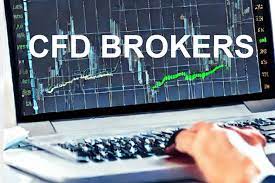
In the fast-paced and ever-evolving landscape of CFD (Contract for Difference) trading, automation has emerged as a powerful tool for traders seeking efficiency, precision, and the ability to capitalize on market opportunities. The use of algorithms, or automated trading systems, has become increasingly popular among traders looking to streamline their strategies. In this article, we explore the benefits and considerations of automating success through the utilization of algorithms in CFD trading.
**1. Precision and Speed:**
One of the primary advantages of using algorithms in cfd trading is the ability to execute trades with unparalleled precision and speed. Algorithms can process vast amounts of market data in real-time, swiftly identifying opportunities and executing trades according to pre-defined parameters. This precision is crucial in capturing fleeting market movements and reacting to changing conditions promptly.
**2. Removing Emotional Bias:**
Emotions can cloud judgment and lead to impulsive decisions in trading. Automated trading systems eliminate the influence of emotions by adhering strictly to predefined rules and algorithms. This disciplined approach helps traders avoid emotional pitfalls such as fear, greed, or indecision, contributing to more consistent and rational decision-making.
**3. Backtesting and Optimization:**
Algorithms allow traders to backtest their strategies using historical data. This process involves applying the algorithm to past market conditions to assess its performance and effectiveness. Traders can optimize algorithms based on the results of backtesting, refining their strategies and enhancing the likelihood of success in future market conditions.
**4. Continuous Monitoring:**
Automated trading systems operate 24/7, monitoring the markets for potential opportunities and executing trades as soon as predefined conditions are met. This continuous monitoring ensures that traders do not miss out on potential trades or market movements, especially in global markets where different time zones may impact traditional manual trading.
**5. Risk Management:**
Algorithms can be programmed to incorporate robust risk management strategies automatically. This includes setting stop-loss orders, position sizing, and other risk mitigation measures. By embedding risk management directly into the algorithm, traders can ensure that their capital is protected, even during volatile market conditions.
**6. Diversification:**
Automated trading systems enable traders to diversify their strategies across multiple markets and instruments simultaneously. This diversification helps spread risk and reduces the impact of adverse market movements in a specific asset class. Traders can implement algorithms tailored to different market conditions and capture opportunities across various instruments.
**7. Adaptability to Market Conditions:**
Algorithms can be designed to adapt to changing market conditions. By incorporating dynamic parameters and adjusting to evolving trends, automated trading systems can remain relevant and effective in diverse market environments. This adaptability is crucial for staying ahead in the dynamic world of CFD trading.
**8. Monitoring Multiple Assets:**
In CFD trading, traders often monitor multiple assets simultaneously. Algorithms excel in handling the complexity of tracking various assets, executing trades across different markets, and managing portfolios with efficiency. This capability is particularly beneficial for traders with diverse investment interests.
**9. Technological Advances:**
Advancements in technology, such as machine learning and artificial intelligence, have further enhanced the capabilities of automated trading systems. These technologies enable algorithms to learn from market data, adapt to changing conditions, and continuously improve their performance over time.
**10. Considerations and Oversight:**
While the benefits of algorithmic trading are evident, traders must exercise caution and oversight. Regular monitoring, periodic reviews, and staying informed about market developments are essential to ensure that algorithms align with current market conditions and continue to perform optimally.
In conclusion, automating success through the use of algorithms in CFD trading offers numerous advantages, from precision and speed to removing emotional bias and continuous monitoring. Traders embracing algorithmic strategies should remain vigilant, adapting algorithms to changing market conditions and leveraging technological advancements to stay at the forefront of the dynamic CFD trading landscape.